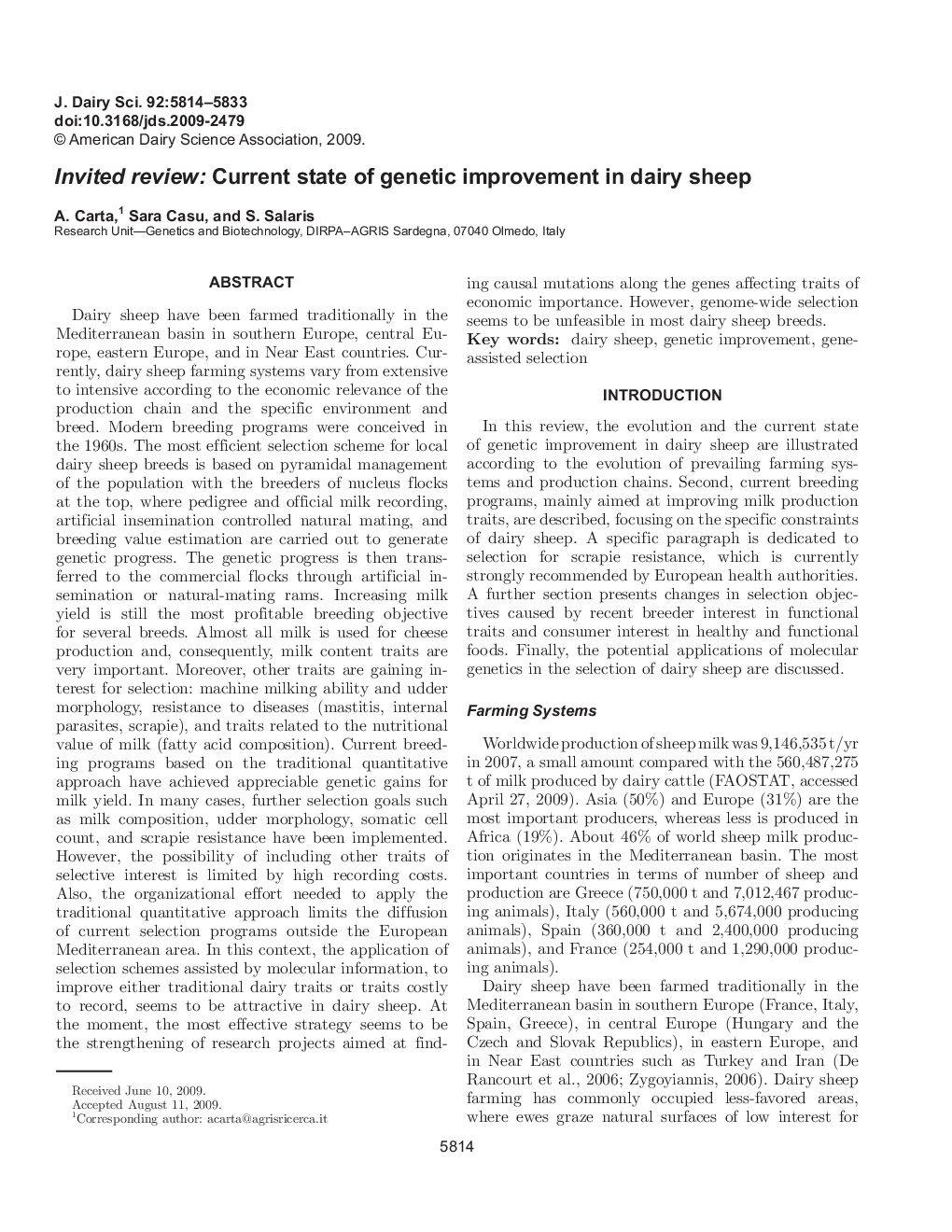| کد مقاله | کد نشریه | سال انتشار | مقاله انگلیسی | نسخه تمام متن |
|---|---|---|---|---|
| 2438926 | 1108082 | 2009 | 20 صفحه PDF | دانلود رایگان |
عنوان انگلیسی مقاله ISI
Invited review: Current state of genetic improvement in dairy sheep
دانلود مقاله + سفارش ترجمه
دانلود مقاله ISI انگلیسی
رایگان برای ایرانیان
موضوعات مرتبط
علوم زیستی و بیوفناوری
علوم کشاورزی و بیولوژیک
علوم دامی و جانورشناسی
پیش نمایش صفحه اول مقاله

چکیده انگلیسی
Dairy sheep have been farmed traditionally in the Mediterranean basin in southern Europe, central Europe, eastern Europe, and in Near East countries. Currently, dairy sheep farming systems vary from extensive to intensive according to the economic relevance of the production chain and the specific environment and breed. Modern breeding programs were conceived in the 1960s. The most efficient selection scheme for local dairy sheep breeds is based on pyramidal management of the population with the breeders of nucleus flocks at the top, where pedigree and official milk recording, artificial insemination, controlled natural mating, and breeding value estimation are carried out to generate genetic progress. The genetic progress is then transferred to the commercial flocks through artificial insemination or natural-mating rams. Increasing milk yield is still the most profitable breeding objective for several breeds. Almost all milk is used for cheese production and, consequently, milk content traits are very important. Moreover, other traits are gaining interest for selection: machine milking ability and udder morphology, resistance to diseases (mastitis, internal parasites, scrapie), and traits related to the nutritional value of milk (fatty acid composition). Current breeding programs based on the traditional quantitative approach have achieved appreciable genetic gains for milk yield. In many cases, further selection goals such as milk composition, udder morphology, somatic cell count, and scrapie resistance have been implemented. However, the possibility of including other traits of selective interest is limited by high recording costs. Also, the organizational effort needed to apply the traditional quantitative approach limits the diffusion of current selection programs outside the European Mediterranean area. In this context, the application of selection schemes assisted by molecular information, to improve either traditional dairy traits or traits costly to record, seems to be attractive in dairy sheep. At the moment, the most effective strategy seems to be the strengthening of research projects aimed at finding causal mutations along the genes affecting traits of economic importance. However, genome-wide selection seems to be unfeasible in most dairy sheep breeds.
ناشر
Database: Elsevier - ScienceDirect (ساینس دایرکت)
Journal: Journal of Dairy Science - Volume 92, Issue 12, December 2009, Pages 5814-5833
Journal: Journal of Dairy Science - Volume 92, Issue 12, December 2009, Pages 5814-5833
نویسندگان
A. Carta, Sara Casu, S. Salaris,